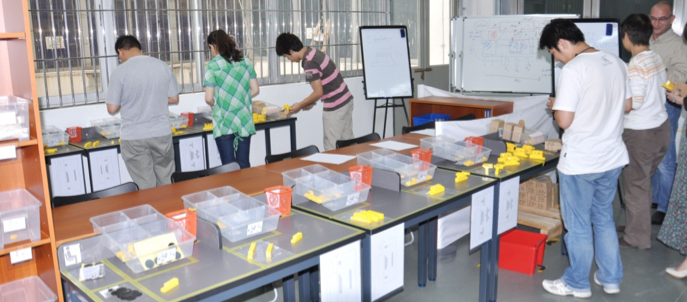 This is the third part in the series about the management of QC inspectors in China.
This is the third part in the series about the management of QC inspectors in China.
Let’s focus on the activities of training, coaching, and auditing inspectors. A few years ago I listed 7 ways inspectors can fail to notice quality problems, which included 4 issues that good training, coaching, and auditing should mostly eradicate:
- Laziness and lack of discipline
- Lack of training
- Wrong calibration (e.g. the wrong standard is applied)
- Corruption
My point is, you can’t skip on this. Your company needs a certain mix of training, coaching, and auditing.
Admittedly it is difficult to come up with “best practices that work for every company” in this area. The mix between these three activities needs to be adapted.
The way to approach these activities will vary based on:
- The type of profiles you hire (new to the job vs. experienced),
- The complexity of the standard to follow and of the tests to conduct,
- Your company culture (trusting and helping employees vs. checking everything they do).
1. Training
I believe classroom training is mostly ineffective in China. It can be helpful to understand the written procedure, the checklist, and some product-related information, but only in a conceptual manner.
As early as possible, put new employees in real-life situations. This way you can see what they tend to overlook. Here are a few examples of situations where they are tempted to improvise:
- “I can pick the cartons from the front and the top. No need to pick cartons from the bottom — it is just extra work.”
- “I know the product. I can just have a quick look and find the problems. No need to go down the checkpoints one by one.”
- “I can trust this factory to do the hi-pot test by themselves and to tell me the result, and I don’t need to supervise them closely.”
At that point, you can demonstrate why their approach is misguided. My point is, if they don’t understand why following their intuition is dangerous, they will not take good habits from the start. And changing those bad habits later on will be much more difficult.
If you feel you can’t follow this approach, there are solutions. For example, you might need help from Aka Outspring, a training company based in Shenzhen. Here is a photo of their training center:
2. On-site coaching
The purpose of a coaching session is to reinforce the message. At the same time, the coach checks if the employee follows the procedure.
Here are two common mistakes that I see very often:
- A QC supervisor is tasked with the on-site coaching job. But he himself never really bought into the procedure. He only makes sure the products are checked the right way — he does not ensure the procedure is followed.
- New inspectors are put in contact with old ones, who often have many bad habits and routinely take shortcuts. They are naturally seen as examples to follow by the newbies, who will also tend to take shortcuts.
This is why having one “instructor” (who may or may not be the quality manager) who does the training and the coaching is important. This instructor needs to fully believe in the benefits of following the procedure — and should suggest changes to it.
(I was told a “coach” only asks questions, while a “mentor” can share some knowledge and give advice to improve one’s skills. But I am using the word “coach” for both.)
3. On-site auditing
In itself, auditing won’t be sufficient. Chinese employees are good at “gaming the system”. But it can be a complement to training and coaching.
It can take multiple forms. For example, sending a senior inspector (preferably from another team) check the products in the factory just after a regular inspection. Based on the evidence (cartons picked and opened, number of samples that got checked, preliminary report…), the auditor can notice certain breaches in the procedure.
Before you set up this type of activity, you obviously need to have a procedure in place and you need to have trained your inspection team. Without a standard to which they can be held accountable, why run these audits?
I would add that, in most cases, on-site coaching (where the coach both retrains and evaluates the inspector) is much more useful than on-site auditing. Auditing becomes necessary when you have serious doubts about the honesty of some of your inspectors.
Do you agree?

